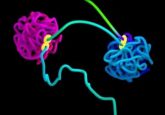Fear: real, imagined, and fabricated or what makes us afraid?

Researchers understand far more about what we fear and why we fear it than expected. They know so much, in fact, that some can fabricate the feeling in others. Their next victim? Maybe you…

Fall brings a chill—not just in terms of temperature, but also in atmosphere. Naked trees appear dead, but are actually alive, lying in wait for warmer days while their cast off leaves suddenly spring from the ground and swirl through the air, caught by an unseen gust of wind. It’s no wonder that this time of year brings to mind all things spooky, creepy, and terrifying.
This week at BioTechniques, we are celebrating by exploring science that fits the season. We’ll start off today by learning what makes us afraid and what makes some daring individuals eager to seek out this feeling. Two groups have investigated this question for decades and come up with a surprising chemical culprit that grants us the ability to simultaneously relish and recoil from frightening situations.
No Halloween celebration is complete without exploring some of the dark creatures of the night, both fictional and real. This week, we will learn about the new discovery of the genetics behind the condition likely to have inspired the character Dracula, along with some real-life specimens in the wild that look unquestioningly like zombies and vampires. Some of these remarkable animals simply take control of their victims’ behavior, while others reanimate days after death, driven by alien fungal invaders.
Not all animals need to be possessed to display startling hidden talents, however. Another creature you’ll learn about harbors a unique trick to prevent itself from becoming a predator’s treat. Researchers recently sequenced its genome to discover exactly how it accomplishes its gory escape and found some secrets that should advance the world of regenerative medicine.
We’ll also take a tour of the hunt for young blood and the real restorative powers it brings, reading about the latest in the surprising field that seeks to turn back aging. And finally, we’ll round out the week with a thorough exploration of mind control exerted by movie makers. Researchers studying neurocinematics use fMRI data to record movie-goers’ responses to horrifying scenes, take that data back to the editing room, and then intentionally edit the film, sound effects, and music to amplify fear responses in viewers.
Whether horror flicks or trick-or-treating zombies are more your Halloween style, we’ve got something for you. So join us to learn more about the biology of fear.





